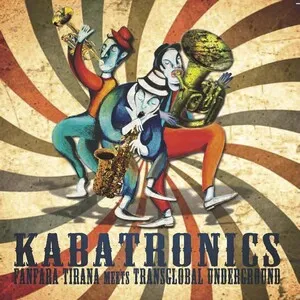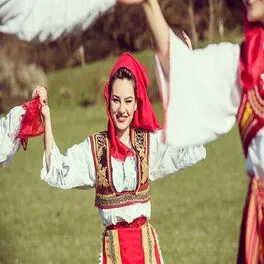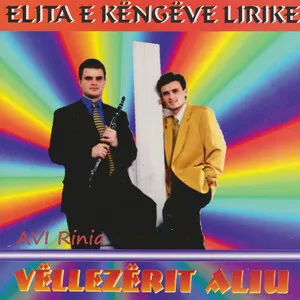Musika popullore is the modern, stage- and record-oriented expression of Albanian folk traditions. It draws on northern epic and dance repertoires, southern iso‑polyphony and saze ensembles, and urban “këngë qytetare” (city songs), presenting them in arrangements suited to concerts, radio, television, and weddings.
Core timbres include the southern clarinet–violin–accordion saze sound, northern çifteli and lahuta, and pervasive hand percussion and frame/drum patterns. Melodically it mixes pentatonic and diatonic tunes with maqam-influenced inflections (notably Hijaz-like tetrachords), while rhythmically it features lively Balkan asymmetries (5/8, 7/8, 9/8) alongside straight duple and triple meters.
In contemporary practice, acoustic ensembles often coexist with synths, drum machines, and live band backlines, keeping dance energy high while retaining recognizable regional melodic and vocal idioms.
Albanian folk practices long predate the recording era, spanning northern Gheg epic songs with lahuta, southern Lab and Tosk iso‑polyphony, saze dance bands centered in Përmet and Korçë, and urban “këngë qytetare.” These streams provided the melodic modes, vocal techniques, and dance meters that Musika popullore later standardized for new audiences.
With the rise of national ensembles and cultural institutions—most notably the Ensemble of Folk Songs and Dances (founded 1957) and the National Folklore Festival in Gjirokastër (from 1968)—folk repertories were curated, arranged, and staged. Radio‑Televizioni Shqiptar disseminated polished performances, fixing characteristic ensemble formats (saze with clarinet/violin/accordion, choral iso drones, virtuosic çifteli leads) and creating the modern umbrella notion of Musika popullore as a presentational folk style.
After the 1990s, private studios, diaspora circuits, and the wedding industry accelerated stylistic updates: synthesizers, drum machines, and pop production entered the sound while keeping regional melodies and dance grooves intact. Kosovo and North Macedonia added their own performers and repertoires, and star singers brought “këngë qytetare” and dance sets to global Albanian communities.
Musika popullore thrives across festivals, TV talent shows, and wedding stages. Acoustic saze revivals coexist with high‑energy pop‑folk shows, ensuring both preservation and evolution of Albania’s signature vocal polyphony, modal turns, and asymmetric dance rhythms.








